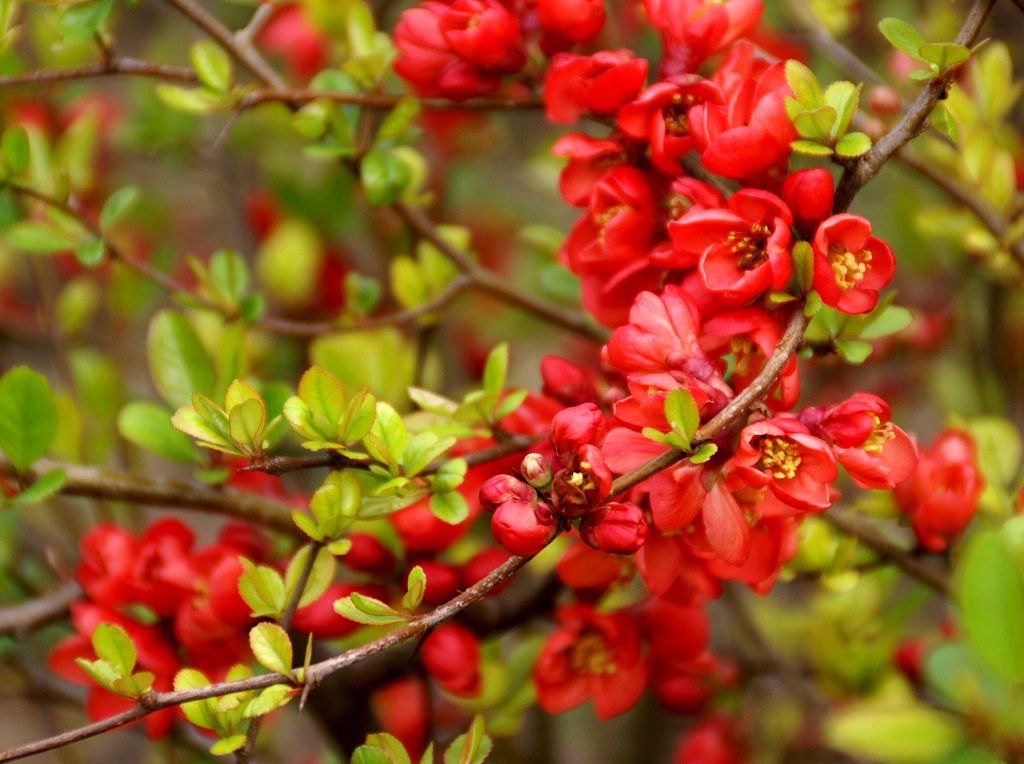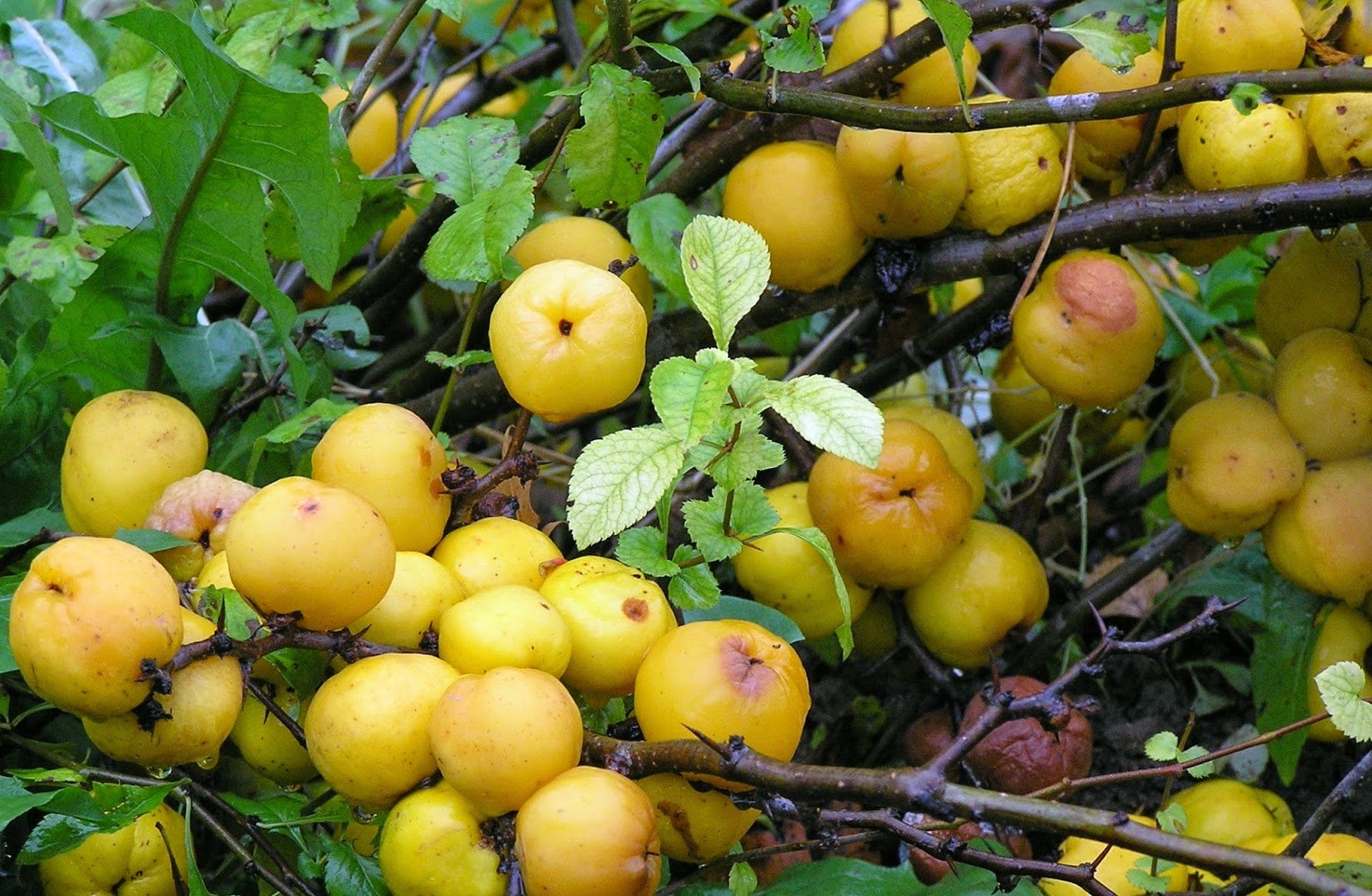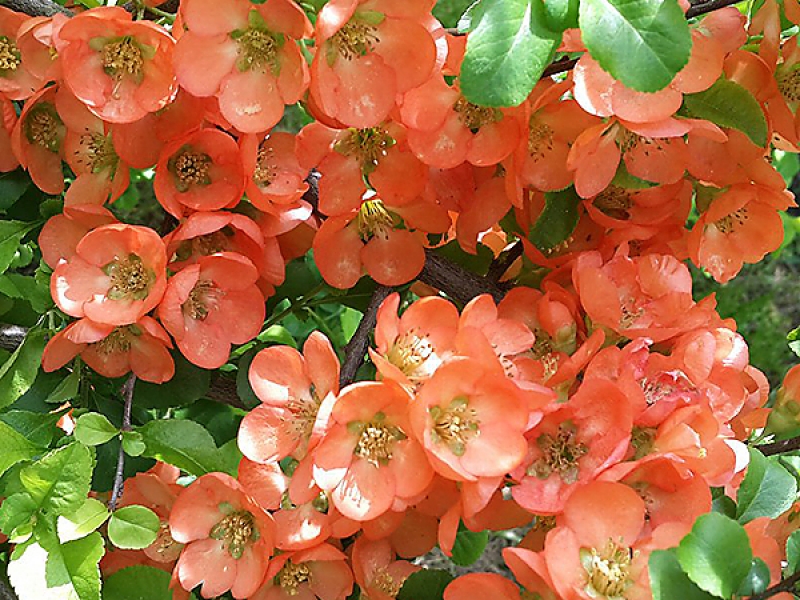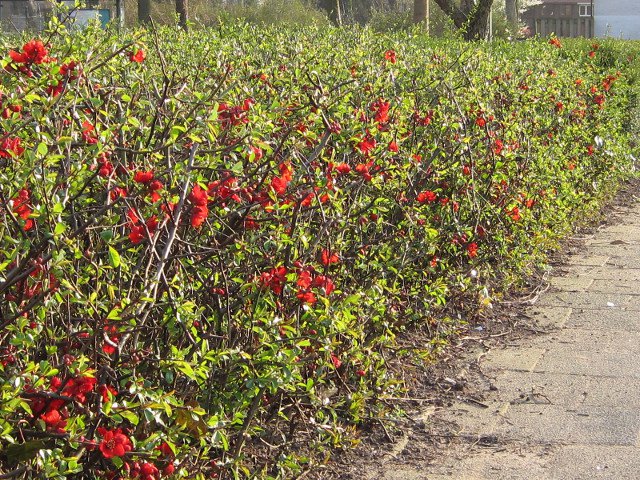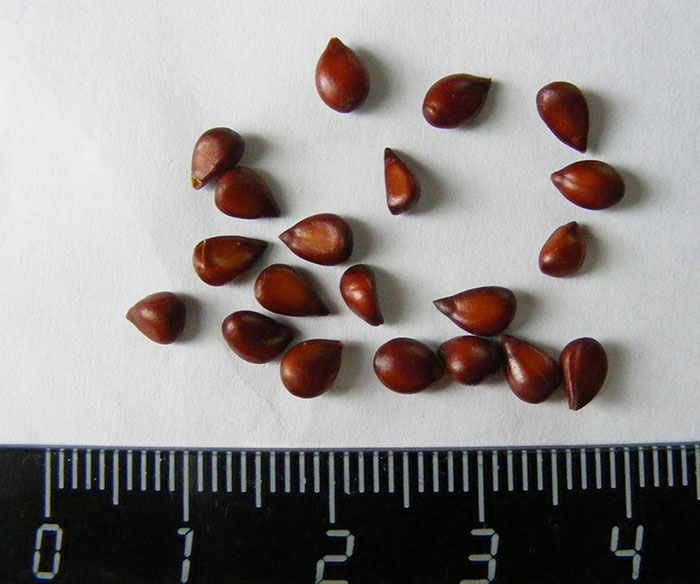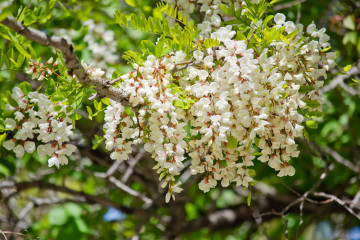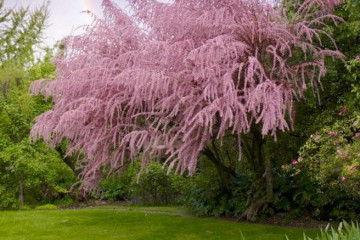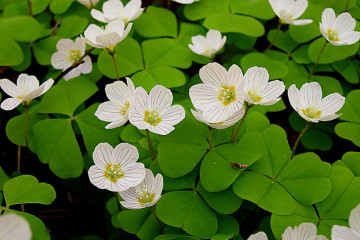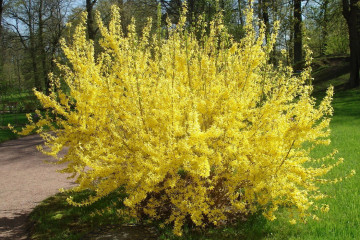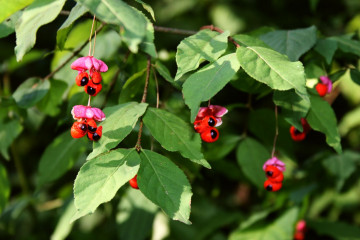Japanese quince shrub - description of the plant and fruits
Content:
The Japanese quince shrub, or chaenomeles, is a fertile plant that belongs to the Pink family. It takes root well in regions with a mild climate, in spring it pleases with abundant and bright flowering, in autumn - with useful fruits.
Origin and appearance
Japanese quince is not only a decorative shrub, but also a fruit-bearing one. Every autumn, fruits grow on the branches that outwardly resemble an apple or a common quince, but smaller. The diameter of the fruit does not exceed 4 cm, which is why the plant was given another name - "false apples".
Quince fruits are dense in structure, sour in taste and have a fragrant aroma. Inexperienced gardeners mistakenly compare the Japanese shrub and the common quince. The only common feature of the two plants is that both belong to the Rosaceae family, while they have a different genus and purpose.
The homeland of the quince shrub is China, Japan and Korea, a brightly flowering plant often becomes a decoration of a rock garden. The developed root system allows you to strengthen the slopes in places where the relief drops or create a hedge.
Japanese quince, a detailed description of the bush:
- Plants of different varieties are deciduous or evergreen;
- Height varies from 1 to 3 meters;
- Shoots are arched;
- Leaves are glossy, oval or teardrop-shaped, depending on the variety.
The plant has a large number of hybrid forms, on the shoots of some of them thorns up to 2 cm long grow.
In the period from May to June, quince blooms profusely, all shoots are covered with a large number of buds. Flowers are painted in scarlet, orange or red-orange colors; varieties with pink and white flowers are less common.
In diameter, the flower reaches a size of 3-4 cm, some types of quince are covered with flowers with a diameter of 5 cm. The buds can grow singly or gather in a cluster of 2-6 flowers. The flower itself can be ordinary or double, consisting of a large number of petals.
Types and varieties
There are several types of chaenomeles, on the basis of which many hybrids have been bred, which differ in color, leaf shape, flower size.
Hybrid plant forms are divided into different varieties, of which there are about 500.
Quince katayanskaya
Katayanskaya quince is a large shrub that grows up to 2-3 m in height. In spring, the leaves of the plant acquire a purple hue, by summer they turn green and become glossy. Every year in May, the shrub is covered with an abundance of pink or white flowers.
Garnet bracelet
A shrub with densely growing foliage, its height does not exceed 1 m. Thorns grow on the shoots, and a hedge can be formed from plants. The flowers grow large, reach a size of up to 5 cm in diameter, gather in groups of 2-6 buds. The buds are colored red or scarlet red.
Quince decorative
Ornamental chaenomeles is a deciduous shrub, its young shoots are colored green, eventually becoming brown. The color range of the buds is from pink to orange-red. The flower grows up to 3.5 cm in diameter.
Transplant after purchase in open ground
When choosing a place for planting, it must be borne in mind that ornamental quince is a photophilous plant. When transplanting a plant into open ground, it is important to choose a suitable place and organize further care.
What is needed for landing
The land for planting decorative quince is prepared in the fall, in order to plant seedlings in the spring. To prepare the soil in the fall you will need:
- Deciduous land;
- Sand;
- Peat and manure compost. 1 m2 will need 7-8 kg;
- Potash fertilizers at the rate of 35-40 g per 1 m2. Can be replaced with phosphate fertilizers.
During planting in the spring, a nutrient mixture is used, its recipe:
- Humus - 5 kg;
- Superphosphate - 250 g;
- Ash - 500 g;
- Potassium nitrate - 25 g.
For planting in open ground, you should choose two-year-old seedlings with a closed root system. Rotten, dried or broken roots must be removed.
Optimal location
Shrubs growing in the shade bloom poorly and grow slowly. Best of all, quince takes root from the south side, where there will be enough sunlight. The plant does not like strong drafts, so it is better to plant it next to other groups of trees or near the walls of the house.
Ornamental quince takes root in loose soil with a neutral or slightly acidic reaction. Sandy loam and loamy soils, which contain enough humus, are suitable for planting.
The shrub tolerates dry weather well, its central root shaft penetrates deep into the ground and is nourished by moisture. The soil should be moderately moist without stagnant water.
Step-by-step planting process
Having chosen a suitable place, you can start planting:
- In autumn, the soil is cleaned, compost from peat and manure is added to it. Additionally, phosphorus fertilizers are added to the ground;
- In the spring, for planting, they dig a hole 50x50 cm in size, 60-70 cm deep;
- A nutrient mixture for backfill is made from humus and ash. Superphosphate and potassium nitrate are added to it;
- The nutrient mixture is poured into the planting hole by 1/3, 2-3 cm of ordinary earth is sprinkled on top. Plant roots should not come into contact with fertilizers;
- Before planting, prepared seedlings are watered with plenty of water, placed in a hole and the roots are straightened. The root collar should not go deep, it must be placed at the same level with the ground. The plant is buried, the top layer of the earth is compacted with hands;
- Each seedling is watered with 1 bucket of water, you can cover the ground at the base with branches or wood shavings.
Shrubs are planted at a distance of 1-1.5 m from each other; to form a hedge, the distance is reduced to 50 cm.
Reproduction
Japanese quince can be propagated using seeds or vegetative methods. Growing from seeds is a less laborious process, but it does not guarantee the preservation of the properties of the mother plant.
Cuttings
Shrub cuttings are advisable if you need to preserve the properties of a certain quince variety. Cuttings are harvested in the first half of June before the start of the heat, they need to be cut before 9-10 in the morning.
It is necessary to prepare the soil for planting in advance, for it you need to mix peat and sand in a ratio of 1: 3. The workpieces are planted at a slight slope into the prepared mixture. After 1-2 months, the plant will take root if the air temperature is not lower than 20-25 ° C. In cold areas, the scions are planted in greenhouses that maintain high humidity.
Only 40-50% of cuttings will be able to take root; to increase performance by 15-20%, growth stimulants are used. The workpieces are treated with a solution of 0.01% indolylbutyric acid, after which they are planted.
Growing from seeds
Ornamental quince seeds are obtained from ripe fruits. Large dark brown seeds can be used for reproduction; they do not require any processing. In autumn, they are sown in open ground, up to 80% of crops emerge the next spring.
If it was not possible to plant the seeds before winter, they are placed in damp earth or sand and kept at a temperature of 3-4 ° C throughout the winter. By spring, the shoots will appear, and the seeds can be transferred to the open ground.
Care
Quince is an unpretentious plant, but you need to take care of it; in the wild, the ornamental shrub gradually loses its ability to bloom luxuriantly. Despite the fact that the ornamental shrub comes from the East, it easily takes root even in the northern regions of the Moscow region.
Watering mode
Japanese shrub quince does not require abundant watering, the shrub is resistant to drought and high temperatures. Young seedlings are watered every week until they take root. An adult plant is watered once every 2-3 weeks; during the rainy season, the plant does without watering.
Top dressing
Top dressing is carried out in the spring for 2 years after planting the seedlings. Mineral and organic mixtures can be used as fertilizers. To feed 1 bush, you must mix:
- Compost - 1 bucket;
- Potassium nitrate - 300 g;
- Superphosphate - 300 g.
During the summer, an adult plant can be fed with a liquid fertilizer, such as an aqueous solution of saltpeter or a mixture of water and droppings.
During flowering
In summer, the land around the bush must be loosened by 5-7 cm in order to saturate with oxygen. If the summer is dry, the soil under the quince is mulched with sawdust or peat, the layer height should be 3-4 cm. The land is regularly cleared of weeds.
During the rest period
Fertile trees need to be pruned several times a year. In the spring, before flowering, sanitary pruning is carried out, rotten and frozen shoots are removed. In autumn, the shape of the crown is trimmed, the branches are shortened. Shoots over 5 years old must be trimmed.
Preparing for winter
The shrub easily tolerates temperatures down to -25 ° C without shelter. In regions with severe winters and severe frosts, the roots of the plant are covered with spruce branches. Shoots should be bent down and sprinkled with spruce or dry leaves. Young undersized shrubs for the winter are covered with cardboard or wooden boxes.
Every person living in a private house wants to decorate their garden with beautiful plants. One of the favorite shrubs of gardeners and landscape designers is Japanese quince, care and cultivation of a shrub does not take much time. The next year, the seedlings grow and are covered with the first flowers.
